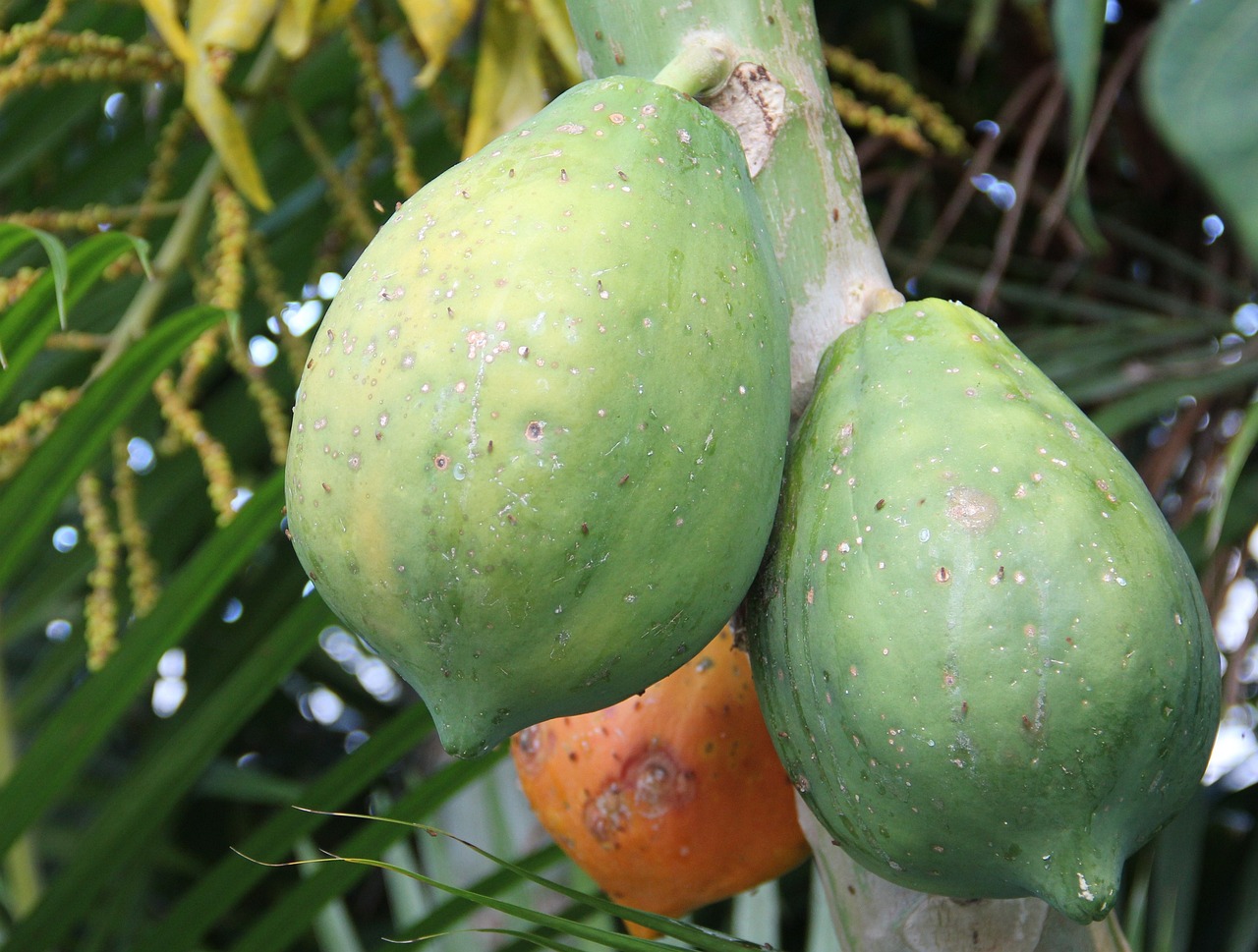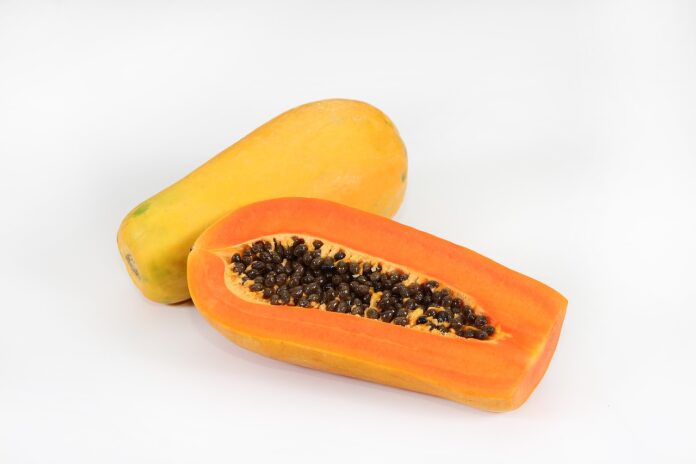If you’ve never tried papaya, don’t be discouraged. The fruit’s other name is “melon tree,” and it indeed resembles a familiar melon: yellow flesh, thick skin, and many seeds in the center. The texture is also similar. The main difference lies in the taste.
Many compare papaya’s flavor to that of pumpkin or even carrot, but true connoisseurs know that each variety of papaya has its unique flavor profile. Some fruits have a distinct coffee-like taste and aroma, others have floral notes, and some are simply incomparable. Thus, you must try fresh papaya to fully understand its taste.
When buying papaya for the first time, look for red-pink hues on the skin and a soft texture—these will be the ripest and most flavorful. Cutting it is easy, just like a melon. Slice it in half, scoop out the seeds, and enjoy the flesh with a spoon. Unfortunately, papayas don’t ripen further after being picked, so if it’s unripe when you buy it, it will stay that way. Still, even unripe papaya can be used in cooking. For instance, in India, green papaya is commonly added to curry dishes.
How and Where It Grows
The tree that produces papayas is highly sensitive to climate changes. It thrives in only two regions: Mexico and Central America. Even slight frosts can cause the plants to wilt and stop bearing fruit. There are also papaya plantations in the Philippines, Indonesia, and Vietnam, but they tend to grow as wild, uncultivated plants.
One great advantage of the tree is its rapid growth—just over a year passes from planting to the first harvest. The plant can reach heights of 15 meters (49 feet) and continues to bear fruit year-round. The main challenge in cultivation is that any damage to the root system usually kills the tree instantly. This is why papaya plantation owners are so careful when selecting locations for planting.
Those attempting to grow papaya at home face many difficulties, too. Due to its rapid growth, the tree requires regular feeding, daily watering, and a constant spot in the sun. Even with optimal care, it’s unlikely the tree will bear fruit indoors, but it can still make for an exotic addition to your apartment.
Benefits Of A Miracle Fruit
Papaya’s health benefits, like those of other fresh fruits and vegetables, are undeniable. Its orange color indicates a high level of carotene, essential for skin, bone, and eye health. Papaya is also an excellent source of fiber, minerals, and vitamins B and C. However, there is another element in papaya, known as papain, that is touted as a cure-all for many ailments.
Some of papain’s benefits have been scientifically proven. It accelerates cell regeneration after severe burns, has anti-inflammatory properties, and is used in treating herniated discs. However, numerous supplements made with papain often claim to cure nearly every disease, a claim largely based on consumers’ lack of knowledge about the substance’s true effects on the human body.
It’s better to select a ripe and delicious fruit from the store, or even buy dried papaya, than to rely on mysterious pills. Eating a juicy fruit is far more enjoyable than taking an unattractive tablet.
Let’s not forget papaya’s use in skincare products. Rich in potassium and vitamins, papaya is a great ally in maintaining healthy skin and hair. Its antibacterial properties make it useful as a disinfectant for small wounds. However, buying pure papaya oil is quite challenging. It’s more commonly found in creams, shampoos, or masks, and due to its high alkaloid content, papaya oil is not used in cooking at all.
